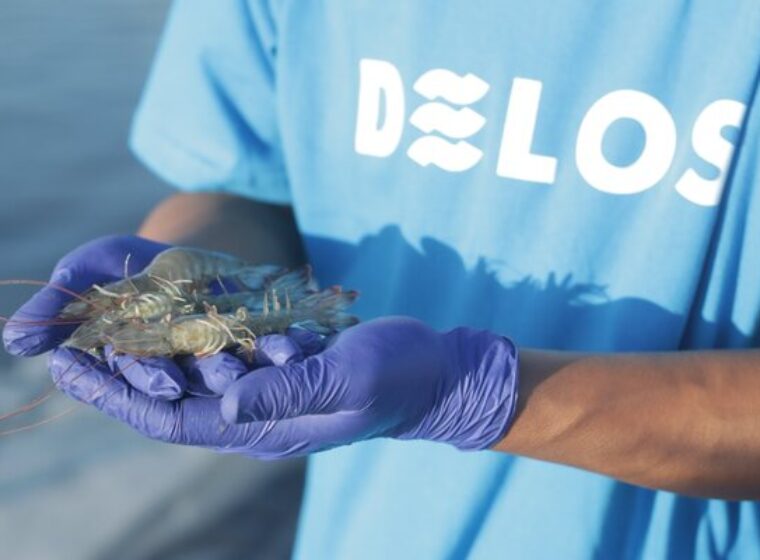Taura Syndrome Virus (TSV) is a highly contagious disease affecting shrimp aquaculture worldwide. This disease can cause death up to 40-90% in post-larvae and juvenile stages.
The Taura Syndrome virus was first identified in 1992 during an outbreak that caused economic losses in Ecuador. Since then, TSV disease has become a significant concern in the aquaculture industry.
So, what are the signs that shrimp are infected with Taura Syndrome Virus (TSV), and how is it treated? Come on, find out more in this article.
Also Read: 7 Types of Shrimp Diseases that Often Occur During Cultivation
What is TSV?
Taura Syndrome Virus (TSV) is a disease of vannamei shrimp caused by an infectious virus that affects shrimp farming in various parts of the world. The disease caused by this virus first appeared in Ecuador in 1992. However, it later spread to Asian regions by importing infected fry and broodstock.
TSV is classified as a small icosahedral virus that belongs to the virus family called Dicistroviridae. This virus has a single-stranded RNA genome of about ten kilobases.
The Taura Syndrome virus infects the hepatopancreas, the digestive gland of the shrimp, and causes severe necrosis, which results in the death of organ function. This virus can also cause gill discoloration, lethargy, and mass death.
Transmission of Taura Syndrome Virus
Taura Syndrome Virus (TSV) is transmitted through water, infected shrimp and contaminated equipment. This virus can also be transmitted vertically from infected broodstock to the resulting fry.
In addition, shrimp that have been infected with TSV can still be carriers of the virus for the rest of their lives. Migratory birds, aquatic insects, and humans can also be a route for transmission of this virus.
The Taura Syndrome Virus can also infect through the excrement of seagulls that previously ate shrimp infected with this virus.
Symptoms of TSV in Vannamei Shrimp
Vannamei shrimp that are attacked by TSV usually show more than one symptom. Here are some common symptoms:
- Shrimp become lethargic
- Decreased appetite
- The prawns gathered at the edge of the pond when they were almost dead
- High and sudden death rates in post larvae and juvenile shrimp.
- The shrimp’s stomach is empty, and the shrimp’s body is pale red
- Fan tail and shrimp pleopods are red
- Shrimp shells softened
- There are dark spots that are randomly distributed on the cuticle of the shrimp.
Also Read: Recognize 7 Characteristics of AHPND Disease in Vannamei Shrimp Before It’s Too Late
How to Detect TSV Disease
Detection of Taura Syndrome Virus (TSV) disease can be done by PCR (Polymerase Chain Reaction) method, gross pathology, in situ hybridize, and bioassay. However, detection by PCR (Polymerase Chain Reaction) is the most accurate method that can be done.
Examination by the PCR method consisted of three stages, namely extraction of DNA/RNA samples for preparation of prints, DNA/RNA amplification with the help of a PCR machine (thermocycler) and analysis of the amplification results by electrophoresis, DNA/RNA staining and documentation with a Polaroid camera.
Control and Treatment
Until now, no vaccine is available to prevent transmitting this TSV disease. The precautions that farmers can take at this time is to control its spread.
One of the most effective preventive measures is to ensure the use of broodstock and frying free of the Taura Syndrome Virus (TSV). In addition, regular testing of shrimp populations and strict biosecurity measures can also help reduce the risk of infection.
Also Read: Get to Know the Covert Mortality Nodavirus (CMNV) which Can Attack Vannamei Shrimp
Overcome TSV Disease in Vannamei Shrimp with DELOS!
Taura Syndrome Virus (TSV) disease significantly threatens the vannamei shrimp farming industry worldwide. Understanding the symptoms and how to detect this disease is very important for farmers to prevent high losses.
For those worried that your vannamei shrimp farming will be attacked by TSV, you can take early prevention by making proper pond preparation and management with DELOS.
DELOS has Farm Management that can assist you in managing shrimp ponds according to international standards.
Together with a reliable and experienced scientific and operational team for many years, DELOS is ready to assist you in managing your shrimp ponds, including mitigating if the disease is detected in your shrimp ponds.
To become part of DELOS, contact contact@delosaqua.com or ask questions via the contact box on our website at www.delosaqua.com. Trust your shrimp pond management to DELOS!
———-
Source:
Surfianti, dkk. 2010. Deteksi Penyakit TSV (Taura Syndrome Virus) secara PCR pada Udang Vannamei (Litopenaeus vannamei) dengan Berbagai Ekstrasi, Suhu dan Waktu Penyimpanan. Hamera Zoa – Majalah Ilmu Kehewanan Indonesia Volume II Nomor 1, Desember 2010.
Susanti, E. 2016. Identeksi Virus TSV (Taura Syndrome Virus) pada Udang Vannamei (Litopenaeus Vannamei) di Kabupaten Mempawah Hilir dengan Metode PCR (Polymerase Chain Reuction). Skripsi. Pontianak: Universitas Muhammadiyah Pontianak.
Koesharyani, dkk. 2015. Sebaran Infeksi Taura Syndrome, Infectious Myonecrosis, dan Panaeus vannamei Nervous Virus (TSV, IMNV, dan PvNV) pada Budidaya Udang Litopenaeus vannamei di Jawa Barat, Jawa Timur, dan Bali.
Department of Agriculture, Water, and the Environment of Australia. 2020. Infection with Taura Syndrome Virus (TSV).




